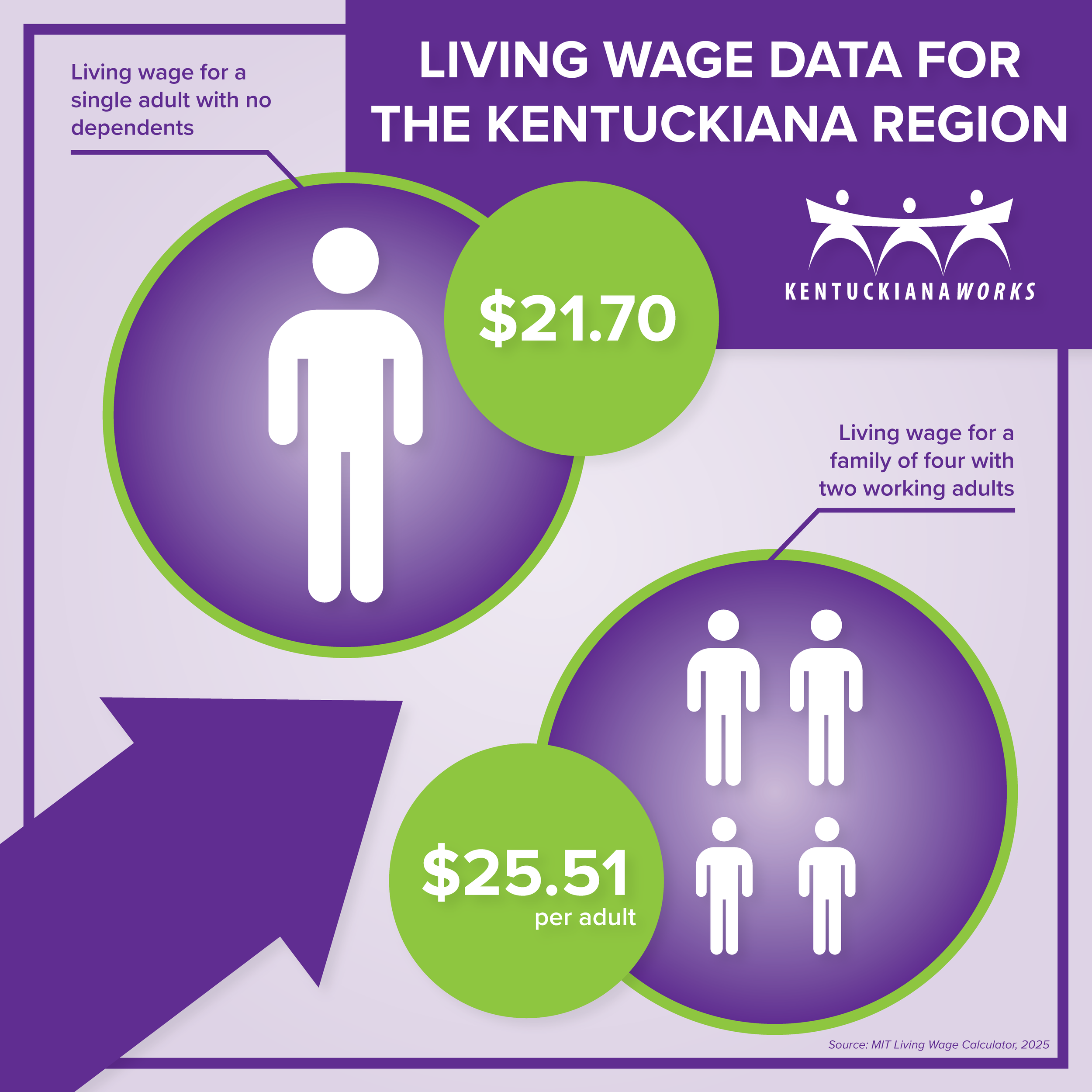
News

Tracking the Class of 2023's First Year Outcomes
What happens to nearly 10,000 young people after they walk across the graduation stage can shape an entire region's economic future. As the class of 2023 from the KentuckianaWorks region completes their first year in the workforce, the data reveals both promising trends and concerning gaps that demand attention from educators, employers, and policymakers alike.

How much does it cost to just get by in your community?
Many workers in low-wage jobs do not earn enough to meet their basic needs in the community in which they live. Researchers at MIT developed the Living Wage Calculator using current data and covering modern-day expenses, to provide communities with an understanding of how much it costs a full-time worker to meet their basic needs. The living wage is the minimum threshold needed to maintain economic self-sufficiency without the use of public assistance programs and without facing severe housing or food insecurity.

The lasting impact of federal policy and discrimination on Black workers in the Louisville region
As we celebrate Black History Month and this year’s theme of African Americans and Labor, it’s important to call attention to the policies that limited Black workers’ access to quality employment in the past, and how the impact of those policies can still be seen in the unequal labor market outcomes across our region today.

Spotlight on Job Quality
Labor Day is celebrated to recognize the “social and economic achievements of American workers.” So in celebration of the American worker, and those within the Louisville region in particular, this post will cover job quality. As stated in the KentuckianaWorks mission, dignified work is that which satisfies needs, creates value, and inspires hope.

Spotlight on the manufacturing industry
The manufacturing sector is the second largest sector in the Louisville region’s economy, and holds a special place in the history of the region’s development. Learn more about the current state of the manufacturing industry in this spotlight.
